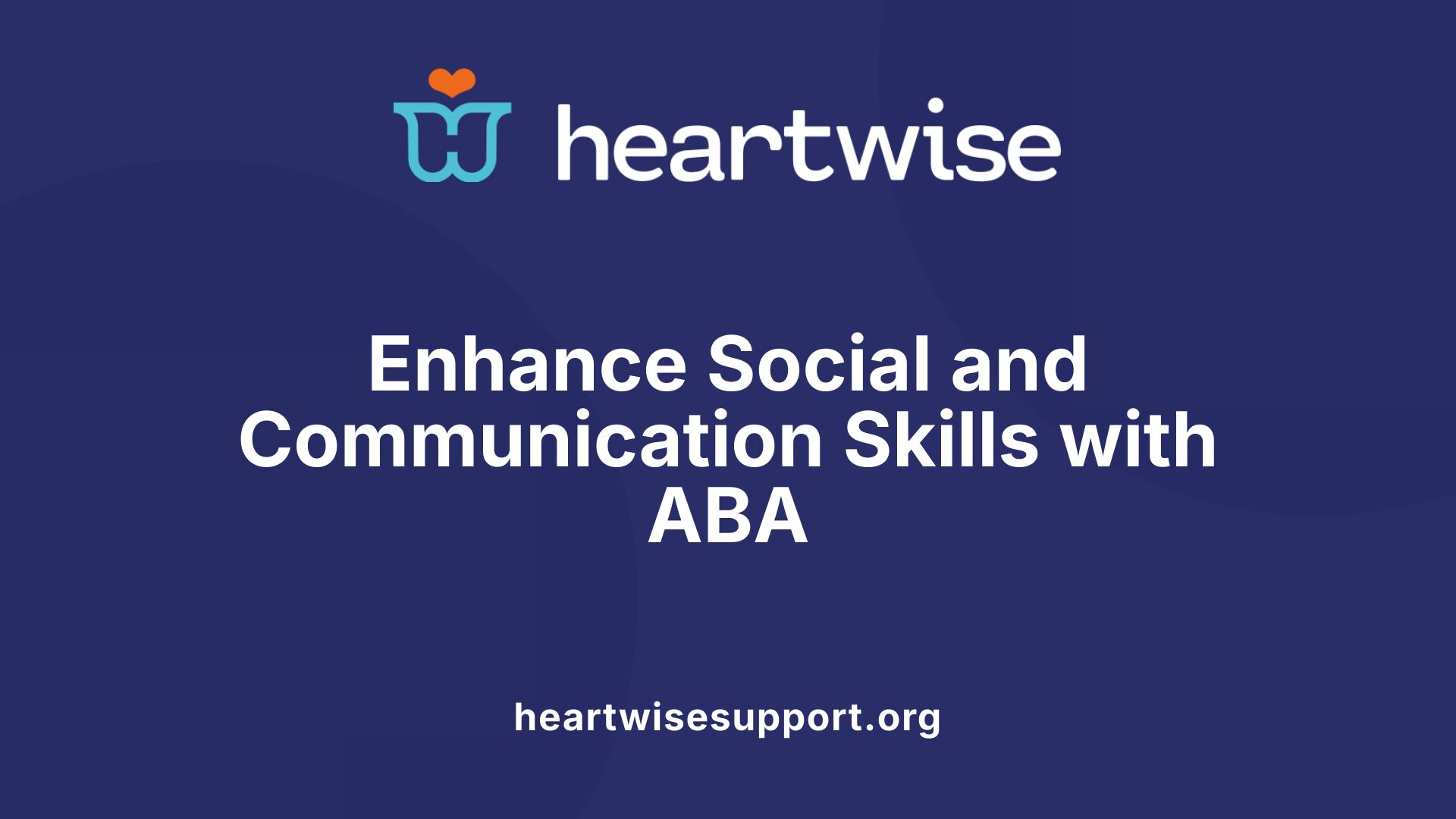The Power of ABA in Today's Educational Landscape
Applied Behavior Analysis (ABA) has emerged as a leading evidence-based approach to supporting academic success, especially for children with autism spectrum disorder. Its structured techniques focus on fostering positive behaviors, improving social skills, and addressing behavioral challenges that can hinder learning. This article explores how ABA is implemented in classrooms, the strategies used, and the tangible benefits it provides in aligning behavioral development with academic achievement.
Implementation of ABA in the Classroom: Strategies for Success

How is ABA implemented in classrooms to improve student outcomes?
Applied Behavior Analysis (ABA) is a widely used, evidence-based approach to support students' learning and behavior in classroom settings. Its primary focus is on enhancing socially significant skills, including communication, social interactions, academic abilities, and reducing behaviors that interfere with learning.
In practice, educators and therapists employ various strategies such as prompting, shaping, chaining, and task analysis. These techniques help break down complex skills into manageable steps, making learning more accessible and less overwhelming for students.
Prompting involves providing cues or assistance to encourage correct responses, which are gradually faded to promote independence. Shaping reinforces successive approximations toward a desired behavior, gradually making the behavior more precise. Chaining links individual steps together to form a complex activity, ensuring that students learn skills in a logical sequence.
Data collection is integral to ABA, allowing teachers to track progress, identify patterns, and modify strategies as needed. Visual supports like schedules, picture cards, and visual cues are particularly effective for visual learners and students who benefit from clear, concrete information.
To individualize instruction, functional behavior assessments are conducted to understand the purpose behind behaviors and develop tailored intervention plans. Discrete Trial Training (DTT) is a structured method that presents clear, repeated lessons to reinforce desired behaviors and skills.
Overall, ABA's structured and systematic approach creates a positive learning environment where behaviors are shaped, skills are acquired, and students can generalize behaviors across various settings.
Techniques such as prompting, shaping, chaining, and task analysis
These core ABA techniques serve as the foundation for effective teaching:
| Technique | Purpose | Example |
|---|---|---|
| Prompting | Provide cues to encourage correct responses | Using visual or verbal cues to initiate a task |
| Shaping | Reinforce small steps toward a complex behavior | Rewarding successive approximations to improve social interactions |
| Chaining | Link individual steps to form a complete skill | Teaching a student to tie shoes by teaching each step separately |
| Task Analysis | Break down a complex task into smaller parts | Creating a step-by-step guide for completing a math problem |
These methods help make learning manageable and promote steady progress toward independence.
Role of visual supports and data collection for effective implementation
Visual supports—including schedules, social stories, and cue cards—are essential for clarifying expectations and supporting understanding. They are especially useful for students with autism who often process visual information more effectively.
Consistent data recording helps educators assess the effectiveness of interventions, make data-based decisions, and refine teaching strategies. This process ensures that interventions are tailored to individual needs and that progress is systematically tracked.
Individualized interventions through functional behavior assessments and discrete trial training
Functional Behavior Assessments (FBAs) are used to identify the underlying causes of problematic behaviors. By understanding the 'why' behind behaviors, educators can develop targeted strategies that replace maladaptive behaviors with functional, appropriate alternatives.
Discrete Trial Training (DTT) provides a highly structured environment for skill acquisition. It involves presenting clear instructions and immediate reinforcement, which helps reinforce learning and reduces errors.
Implementing these assessments and training methods ensures that ABA interventions are personalized and effective, ultimately fostering better academic and social outcomes for students.
Core Techniques Harnessed in Educational ABA Programs

What are common ABA techniques used in educational settings?
Applied Behavior Analysis (ABA) in schools relies on a variety of specific strategies to promote positive learning and behavioral outcomes. Among these, some of the most frequently used techniques include discrete trial training, positive reinforcement, task analysis, prompting, shaping, and chaining.
Discrete trial training (DTT) involves structured, brief teaching sessions where specific skills are broken down into small, manageable steps. Repeated trials are used to teach these skills, with clear prompts and immediate feedback. Positive reinforcement is central—rewards such as praise, tokens, or preferred activities are used to increase the likelihood of desirable behaviors occurring again.
Task analysis is a method where complex skills are broken down into smaller, sequential steps. This makes learning more manageable and helps students build confidence as they master each step before progressing.
Visual supports, including social stories, visual schedules, and picture cues, are extensively used to assist comprehension and independence. These tools provide visual clarity about routines, expectations, and social rules.
Role-playing is also a key activity, allowing students to practice social skills like turn-taking, greetings, and understanding social cues in a safe environment. Modeling by teachers or peers demonstrates appropriate behaviors and social interactions.
Throughout ABA interventions, data collection is vital. Educators and therapists regularly record student responses and progress, analyzing the data to tailor interventions. This continuous monitoring ensures each student’s individual needs are met effectively, enabling modifications when necessary.
In summary, ABA in schools employs a combination of structured teaching, reinforcement, visual aids, role-playing, and data analysis—creating a comprehensive approach that supports diverse learning and behavioral goals.
Supporting Academic Development with ABA Strategies

How does ABA support academic success?
ABA therapy helps children, especially those with autism spectrum disorder, to boost their skills in areas fundamental to learning. It uses tailored reinforcement methods and structured teaching to improve attention spans, memory capacity, and their ability to complete tasks.
Through consistent positive reinforcement such as verbal praise, preferred activities, or small rewards, ABA encourages children to stay focused and engaged in classroom activities. Breaking complex academic tasks into smaller, manageable steps makes learning less overwhelming and more achievable, promoting confidence and persistence.
Furthermore, ABA techniques aim to foster independence by reinforcing autonomous behaviors. Children learn to self-regulate and execute multi-step tasks with less supervision, which directly translates into better classroom performance.
How ABA enhances attention, memory, and task completion
ABA strategies utilize prompts, shaping, and chaining to help children retain information and execute sequences correctly. For example, prompting guides a child through each step of a task, and reinforcement solidifies their effort. Over time, these methods strengthen memory and improve focus.
Consistent routines and visual supports like schedules and prompts make learning predictable and clear, which is key for children with attention difficulties. As a result, they become better at completing assignments accurately and efficiently.
Reinforcement strategies to motivate learners
Reinforcement is crucial in ABA. Positive responses like praise, favorite foods, or free time motivate children to engage and learn. Differential reinforcement, which involves rewarding desirable behaviors while ignoring or withholding reinforcement for undesired ones, effectively reduces distractions and undesirable actions, creating a more conducive learning environment.
In classrooms that employ ABA, reinforcement helps create an atmosphere where students are eager to participate and improve their skills, leading to better academic and social outcomes.
Breaking down complex skills into manageable parts
One of ABA’s strongest features is task analysis—breaking down complex skills into smaller, manageable steps. This approach allows children to learn progressively, gaining mastery step-by-step.
For instance, learning to write might be broken into holding a pencil, tracing letters, lining up words, and then writing independently. Reinforcing each step ensures consistent progress and builds student confidence.
Building confidence and independence
By mastering small parts of a task, children develop a growth mindset and see their successes. Reinforcement of these successes strengthens their motivation to attempt more complex activities.
ABA also emphasizes self-regulation and social skills training, enabling children to better manage their emotions and interacting skills, which are essential for thriving in school environments.
This comprehensive approach of teaching, reinforcing, and gradually increasing complexity helps children develop academic skills while boosting their confidence and autonomy, ultimately supporting their overall success in school.
Fostering Social and Communicative Growth through ABA

How does ABA help develop social skills like turn-taking, sharing, and understanding social cues?
ABA therapy emphasizes teaching social skills through structured activities like conversation practice, understanding body language, and engaging in games such as parallel play. These techniques help children learn how to take turns, share resources, and interpret social cues like facial expressions and gestures. By providing consistent practice and reinforcement, ABA nurtures these skills, making children more comfortable and confident in social settings.
How can ABA enhance communication skills, including expressive and receptive language?
ABA strategies focus on improving both expressive language, which is how children communicate their needs and thoughts, and receptive language, which involves understanding others' words and gestures. Therapists use specific techniques like prompting and shaping to encourage speech, comprehension, and listening skills. As a result, children become better at following directions, asking for help, and engaging in meaningful conversations.
What methods does ABA use to improve peer interactions and overall social participation?
ABA incorporates social skills training that encourages positive interactions with peers. This involves practicing initiating conversations, turn-taking, and recognizing social cues, which are essential for cooperative play and group activities. Facilitating these interactions helps children develop friendships, participate actively in classroom activities, and feel more integrated into their social groups.
What are strategies for developing social confidence through ABA?
Building social confidence involves creating predictable routines, using visual supports, and setting clear expectations. ABA therapy promotes independence by breaking social tasks into manageable steps and providing positive reinforcement for successful interactions. Modeling appropriate behavior and gradually increasing social challenges help children gain confidence and reduce anxiety in social situations.
Can ABA help improve social and academic development?
ABA is effective in supporting both social skills and academic learning, especially for children with autism, by providing targeted interventions tailored to individual needs. It addresses behavioral challenges that interfere with learning and skill development, fostering an environment where children can thrive academically and socially.
| Aspect | Method/Strategy | Purpose |
|---|---|---|
| Social skills | Conversation practice, understanding body language, parallel play | To enhance social interactions and peer engagement |
| Communication | Prompting, shaping, language drills | To improve expressive and receptive language skills |
| Peer interaction | Role-playing, structured play | To foster cooperation and friendship |
| Confidence building | Visual supports, routines, reinforcement | To increase self-assurance and reduce social anxiety |
By integrating these techniques, ABA therapy enables children to develop essential social and communication skills, paving the way for better academic and life success.
Collaborative Approaches for Optimal Outcomes

How is ABA integrated into school environments to improve overall outcomes?
ABA therapy is effectively incorporated into schools through close collaboration among therapists, teachers, and parents. This teamwork ensures that the skills children learn during therapy sessions are reinforced and applied consistently in the classroom setting. Teachers and staff work with ABA professionals to develop strategies that align with academic goals, behavioral expectations, and social integration techniques.
Qualified ABA therapists, particularly those who are Board Certified Behavior Analysts (BCBAs), play a crucial role in guiding this process. They bring expertise in applying ABA principles within educational environments, adapting interventions to fit the classroom context, and training staff to implement strategies consistently. This collaborative effort creates a seamless transition for children and promotes a more supportive and structured learning environment.
How do personalized ABA programs like Belay On’s approach support students?
Belay On offers tailored ABA programs designed to meet each child's unique needs. These personalized strategies help address specific behavioral challenges, enhance communication skills, and develop social competence. By customizing interventions, Belay On maximizes the effectiveness of therapy, ensuring children gain skills that are directly applicable to their school experience.
How can creating consistent routines and expectations enhance classroom success?
Establishing predictable routines and clear expectations reduces uncertainty and helps students feel secure. Consistent schedules and routines support better focus and reduce anxiety, making it easier for children to engage with learning activities. Reinforcing routines with visual supports and visual schedules keeps children on track and fosters independence.
How do visual schedules and behavioral supports contribute?
Visual supports like daily schedules, key points, and classroom rules improve understanding, especially for visual learners and students with special needs. These tools provide clarity and structure, helping children anticipate what comes next and manage transitions smoothly. Coupled with behavioral supports such as reinforcement strategies, these visuals create a positive learning environment that encourages desirable behaviors.
| Strategy | Purpose | Implementation Details |
|---|---|---|
| Partnerships | Ensure cohesive intervention | Collaborate regularly, share updates |
| Customized ABA | Address individual needs | Tailor techniques like prompting and reinforcement |
| Routines & Expectations | Promote predictability | Use visual schedules, consistent rules |
| Visual Supports | Enhance comprehension | Implement visual schedules, cue cards |
This integrated approach, combining collaborative efforts and personalized strategies, helps children with autism thrive academically, socially, and emotionally. School-based ABA programs facilitate positive behavior changes and foster a learning environment where every student can succeed.
Ensuring Success: Training, Adaptation, and Resource Accessibility
What are key considerations for implementing ABA effectively in schools?
Implementing ABA therapy in educational settings involves careful planning and collaboration. Effective programs require the active participation of teachers, counselors, and school staff to ensure strategies are aligned with classroom goals. Creating a consistent approach helps reinforce desired behaviors and facilitates student progress.
Another crucial aspect is utilizing qualified professionals. Practitioners should be Board Certified Behavior Analysts (BCBAs) or have substantial experience in school-based environments. Their expertise ensures that ABA techniques are applied appropriately, respecting each student's unique needs.
Training teachers and staff in ABA strategies
For ABA to be truly effective in schools, educators and staff need comprehensive training in core ABA principles. This includes understanding reinforcement methods, prompting, shaping, chaining, and data collection. Training sessions often involve workshops, ongoing coaching, and practical demonstrations to build confidence in applying these techniques.
When staff are well-trained, they can seamlessly incorporate ABA strategies into daily routines, behavior management, and instructional activities. This continuity enhances the learning environment and promotes positive behavioral changes.
Adapting ABA techniques to meet diverse student needs
Children with autism and other developmental challenges exhibit a wide range of behaviors and learning styles. Therefore, ABA approaches must be flexible and personalized. This involves customizing reinforcement types, adjusting prompting levels, and modifying routines based on the child's responses.
Visual supports, social stories, and routine charts are often used to adapt ABA methods for different learners, especially those who are visual or have communication difficulties. Adapting strategies ensures that all students receive appropriate support to succeed academically and socially.
Locating local ABA providers and resources
Families and schools looking for ABA services in Atlanta can find local providers through various channels. School recommendations, online directories, and local clinics are valuable resources. Many providers work closely with schools to deliver integrated services, making it easier for students to access consistent support.
Moreover, federal and state programs may offer funding or subsidies for ABA therapy, reducing financial barriers. Community organizations and parent groups can also be helpful in connecting families with qualified practitioners.
The importance of certification and specialization for practitioners
Qualified ABA providers should hold certifications such as the Board Certified Behavior Analyst (BCBA) credential. Certification ensures that practitioners have received rigorous training in behavior analysis, ethics, and intervention methods.
Specialization in school-based settings or working with children on the autism spectrum enhances a practitioner's ability to tailor interventions effectively. Continuous professional development keeps providers up-to-date with the latest research and techniques.
| Aspect | Importance | Details |
|---|---|---|
| Certification | Ensures competency | BCBA or equivalent credentials required |
| Experience | Practical application | Hands-on training in school environments |
| Personalization | Meets individual needs | Adapting strategies for diverse learners |
| Collaboration | Ensures consistency | Working with educators, parents, and therapists |
Fostering a well-trained, adaptable, and qualified team is essential for the successful integration of ABA therapy within schools. This comprehensive approach supports students' social, behavioral, and academic growth, laying a strong foundation for their future success.
Empowering Students with ABA: A Pathway to Success
Integrating ABA techniques in educational settings offers a comprehensive approach to supporting student development. It fosters positive behaviors, enhances social and academic skills, and promotes independence and confidence. With proper collaboration, training, and individualized strategies, educators can create structured, supportive environments that enable all students to thrive academically and socially. As evidence-based practices continue to evolve, ABA remains a cornerstone in transforming educational outcomes for children with diverse learning needs, ensuring they are equipped for future success.
References
- Does ABA Therapy Improve Academic Achievement?
- How Effective ABA Therapy Techniques Support Academic Success
- How ABA Therapy Prepares Children for School Success
- How ABA Techniques Impact Student Success - QBS
- Improving Academic Performance with ABA Therapy in Atlanta
- Teaching ABA Social Skills to Students with Autism - TeachTown
- What is Applied Behavior Analysis?











